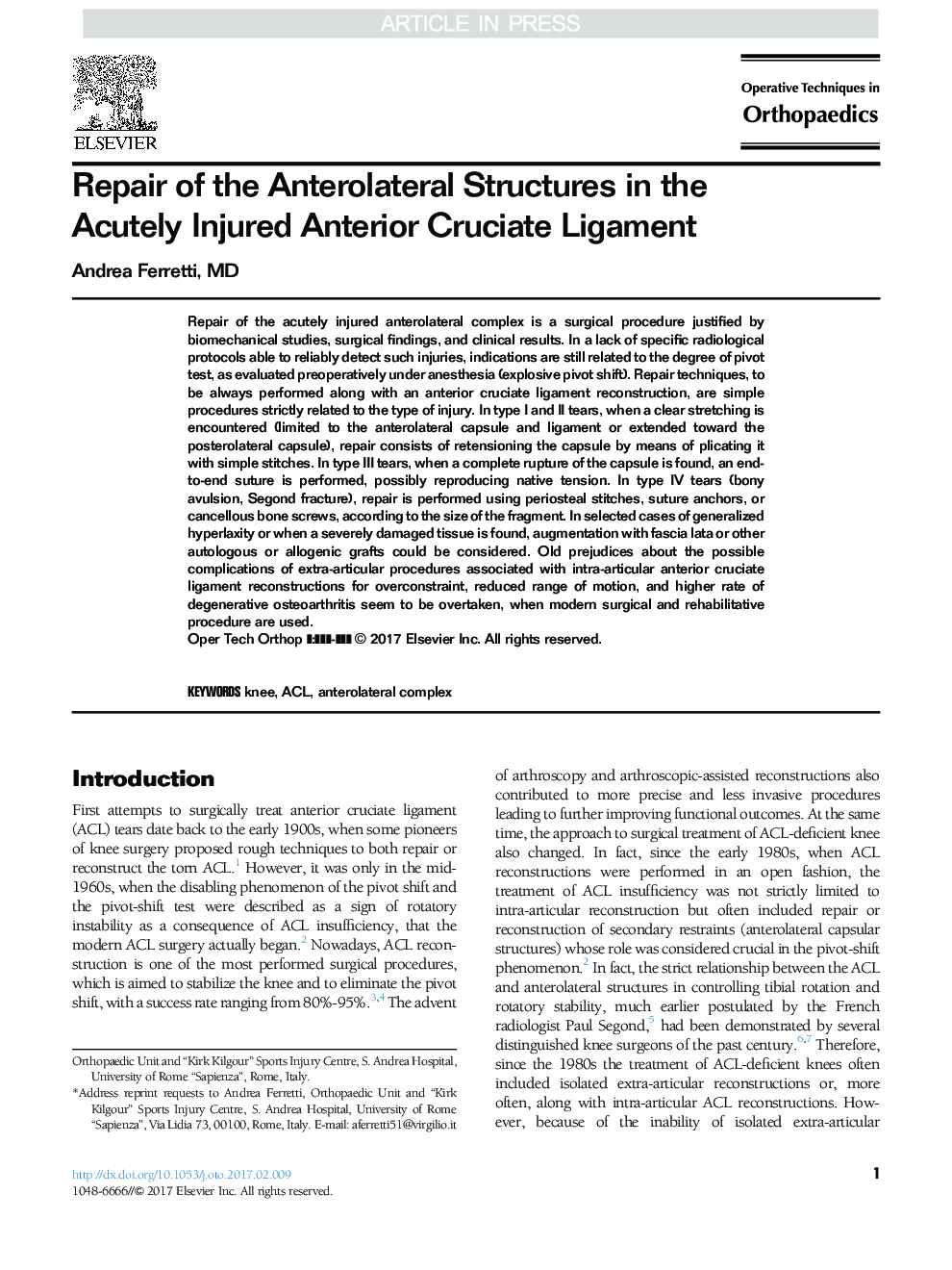| Article ID | Journal | Published Year | Pages | File Type |
|---|---|---|---|---|
| 5710878 | Operative Techniques in Orthopaedics | 2017 | 6 Pages |
Abstract
Repair of the acutely injured anterolateral complex is a surgical procedure justified by biomechanical studies, surgical findings, and clinical results. In a lack of specific radiological protocols able to reliably detect such injuries, indications are still related to the degree of pivot test, as evaluated preoperatively under anesthesia (explosive pivot shift). Repair techniques, to be always performed along with an anterior cruciate ligament reconstruction, are simple procedures strictly related to the type of injury. In type I and II tears, when a clear stretching is encountered (limited to the anterolateral capsule and ligament or extended toward the posterolateral capsule), repair consists of retensioning the capsule by means of plicating it with simple stitches. In type III tears, when a complete rupture of the capsule is found, an end-to-end suture is performed, possibly reproducing native tension. In type IV tears (bony avulsion, Segond fracture), repair is performed using periosteal stitches, suture anchors, or cancellous bone screws, according to the size of the fragment. In selected cases of generalized hyperlaxity or when a severely damaged tissue is found, augmentation with fascia lata or other autologous or allogenic grafts could be considered. Old prejudices about the possible complications of extra-articular procedures associated with intra-articular anterior cruciate ligament reconstructions for overconstraint, reduced range of motion, and higher rate of degenerative osteoarthritis seem to be overtaken, when modern surgical and rehabilitative procedure are used.
Keywords
Related Topics
Health Sciences
Medicine and Dentistry
Orthopedics, Sports Medicine and Rehabilitation
Authors
Andrea MD,
